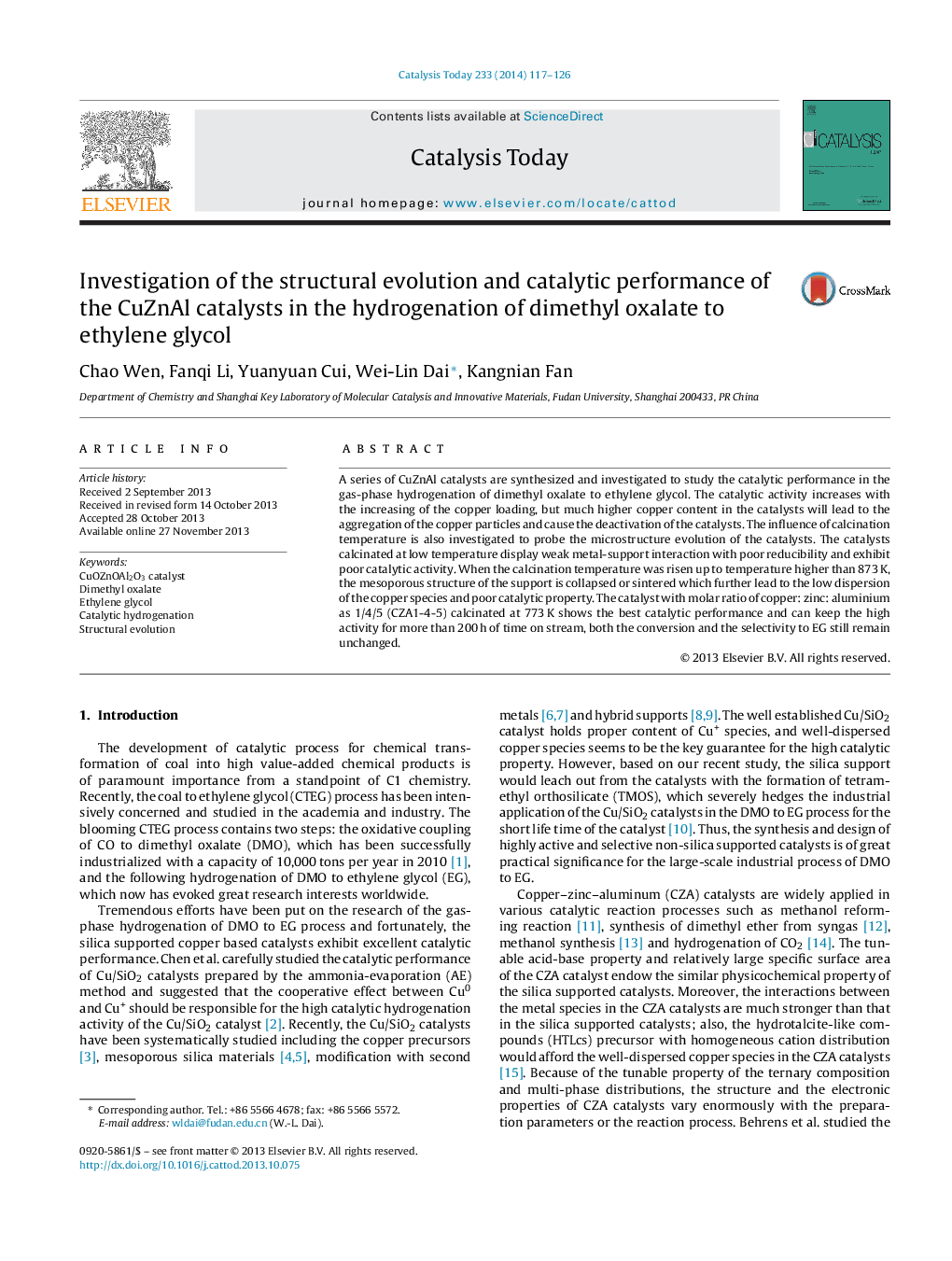| Article ID | Journal | Published Year | Pages | File Type |
|---|---|---|---|---|
| 54320 | Catalysis Today | 2014 | 10 Pages |
•CuZnAl used in the hydrogenation of DMO to EG.•Investigation of copper content and calcination temperature.•Higher content of the copper induce the Cu aggregation.•CZA773 displays the optimal activity.•CZA 1-4-5 shows the best catalytic performance.
A series of CuZnAl catalysts are synthesized and investigated to study the catalytic performance in the gas-phase hydrogenation of dimethyl oxalate to ethylene glycol. The catalytic activity increases with the increasing of the copper loading, but much higher copper content in the catalysts will lead to the aggregation of the copper particles and cause the deactivation of the catalysts. The influence of calcination temperature is also investigated to probe the microstructure evolution of the catalysts. The catalysts calcinated at low temperature display weak metal-support interaction with poor reducibility and exhibit poor catalytic activity. When the calcination temperature was risen up to temperature higher than 873 K, the mesoporous structure of the support is collapsed or sintered which further lead to the low dispersion of the copper species and poor catalytic property. The catalyst with molar ratio of copper: zinc: aluminium as 1/4/5 (CZA1-4-5) calcinated at 773 K shows the best catalytic performance and can keep the high activity for more than 200 h of time on stream, both the conversion and the selectivity to EG still remain unchanged.
Graphical abstractFigure optionsDownload full-size imageDownload high-quality image (286 K)Download as PowerPoint slide
